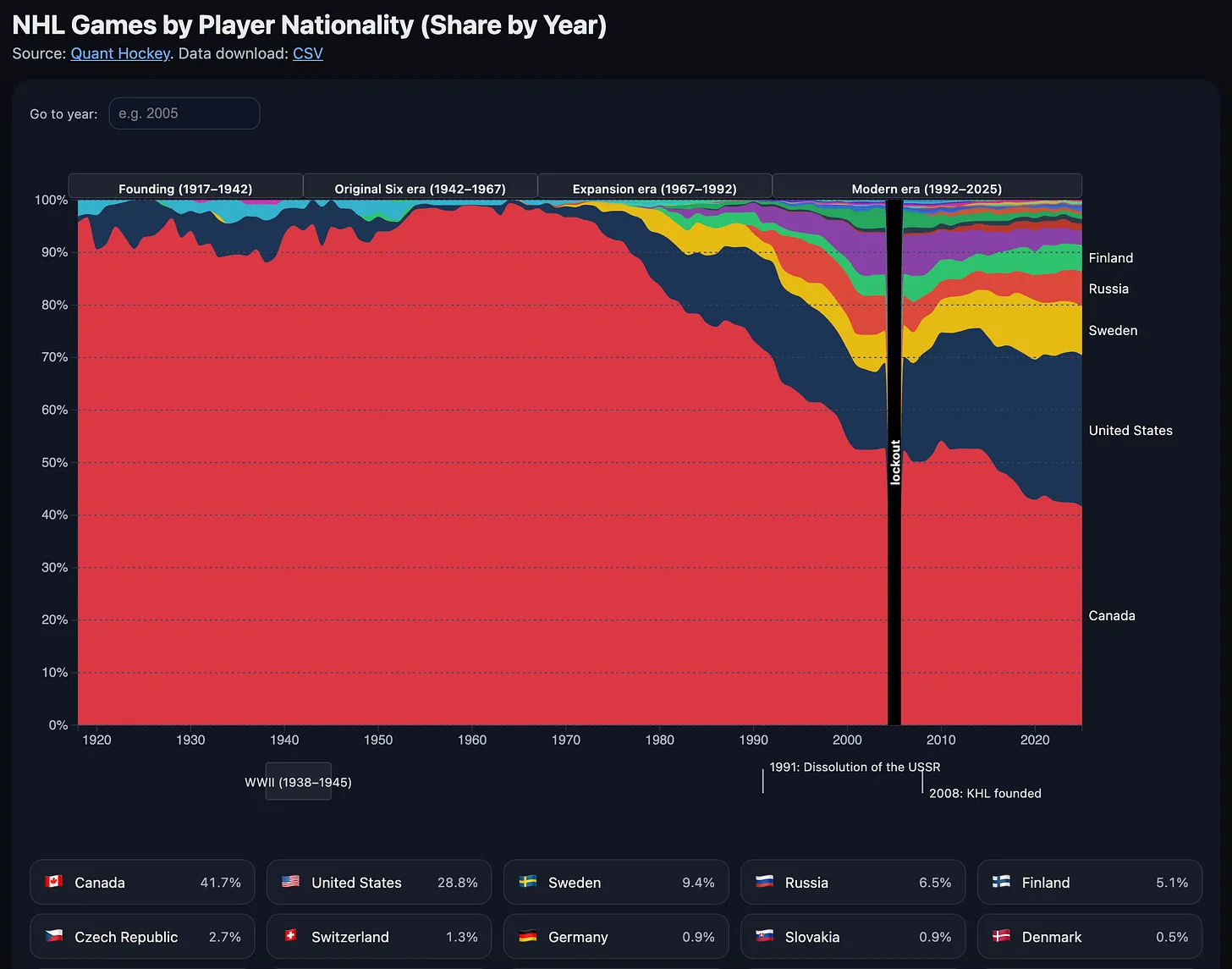A Look at Geopolitical Shifts in the NHL
Twelve years ago, I embarked on a passion project: to visualize the history of the NHL through the lens of player nationality. The result was a static chart that showed the evolution of the league's global footprint. In 2023, I was given the opportunity to update this project GZERO Media. Looking back at the data, the story it tells is even more compelling than I initially thought. It's a tale of Canada's enduring dominance, the rise and fall of geopolitical empires, and the subtle shifts that define the global nature of hockey today.
The Early Era: Canada's Uncontested Reign From the league's inception in 1917, the NHL was a Canadian institution, with Canadian players making up over 90% of the league for decades. The United States was the first to challenge this dominance, but its growth was not a straight line.
World War II: A Dip in the Talent Pool My updated graphic clearly shows the impact of World War II on the league. The U.S. player percentage, which was a steady presence, saw a sharp decline during the war years. It's a poignant reminder that even sports leagues were not immune to the world's most significant conflicts.
The NHL Expands: A New Global Footprint The expansion of the NHL in the late 1960s marked a turning point. Suddenly, the league was hungry for talent, and a new pipeline opened up from Europe. Swedish, Finnish, and Czech players began to appear with increasing regularity. But it wasn't until a major geopolitical event that the league would truly see its global roster transform.
The Soviet Union's Collapse: A Rush of New Talent The dissolution of the Soviet Union in 1991 was a seismic event, and its impact on the NHL was almost immediate. The percentage of Russian players jumped dramatically, as elite talent, previously restricted by the Iron Curtain, was finally free to play on the world's biggest stage. This new influx of players brought a fresh dynamic to the game.
The KHL: A New Challenger In the late 2000s, a new factor entered the equation: the formation of the KHL in 2008. This competing league, with its strong financial backing and proximity to European players' homes, led to a noticeable reversal of the trend. For the first time, the NHL's monopoly on top talent was challenged, and the data clearly shows a decline in the percentage of Russian and European players in the years that followed.
